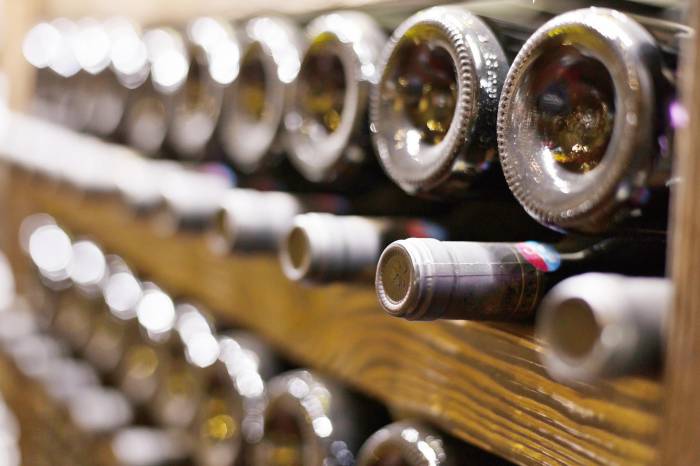South American Wines Seek Prestige and Growth on La Place de Bordeaux Amid Market Uncertainty
Producers face pricing pressures and shifting demand as they navigate the historic French network to build global recognition.
2025-10-08

La Place de Bordeaux, the historic wine trading network in France, has become a global platform for high-end wines, but its relationship with South American producers remains complex. The system, which dates back centuries, was originally designed to spare Bordeaux’s top estates from direct sales. Over time, it evolved into a vast network of 300 merchants distributing wines to markets that traditional channels often cannot reach.
South America’s entry into La Place began in 1998 with Almaviva, a collaboration between Baron Philippe de Rothschild and Concha y Toro. This marked the start of the “hors Bordeaux” campaign, allowing wines from outside Bordeaux to be sold through the same network. Today, hundreds of wines from a dozen countries are available on La Place, but South American labels still represent only a small share.
For South American producers, being on La Place is about more than sales. It is also about gaining prestige by association with Bordeaux’s reputation. Sebastián Zuccardi of Familia Zuccardi said that joining La Place in 2021 helped his estate reach new markets and build its brand image. He emphasized that the goal was not volume but visibility in regions where their wines were less known.
However, the current fine wine market is facing challenges. The Liv-ex Bordeaux 500 index has dropped 5.6% this year and is well below its 2022 peak. The most recent en primeur campaign for the 2024 vintage was seen as disappointing. Aurelio Montes Junior of Viña Montes noted that all producers are struggling with négociants, not just those in Chile. He pointed out that falling Bordeaux prices have increased competition with South America’s niche pricing, requiring more active brand promotion.
Building a brand on La Place is a long-term effort. Zuccardi explained that it takes time to gain the trust of courtiers and négociants before the market responds. He stressed that producers must continue to build their brands themselves; La Place is a distribution system, not a solution to all marketing challenges. Santa Rita’s head winemaker Sebastián Labbé agreed, saying that joining La Place is just the beginning of new responsibilities. He highlighted the importance of working closely with merchants to increase distribution and awareness.
Pricing remains a sensitive issue. While hors Bordeaux wines are generally more affordable than Bordeaux en primeur releases, they are still affected by market trends. Sophia Gilmour, a market analyst at Liv-ex, warned that South American wines on La Place are now tied to Bordeaux’s fortunes. When Bordeaux demand was high, these wines benefited, but now they face similar difficulties as Bordeaux struggles with pricing and demand.
Geraint Carter, an investment specialist at Bordeaux Index, described the timing as unfortunate for South American producers. Their push into La Place has coincided with one of Bordeaux’s weakest periods in decades. He suggested that building recognition and a secondary market for these wines will take many years.
One difference for South American wines is that they are often bought to be consumed rather than held as investments. Gilmour noted that this drinking culture means there is less of a secondary market for these wines compared to Bordeaux, but it also means they may be faring better in terms of actual consumption.
Despite these challenges, there are signs of market fatigue and saturation. Martyn Rolph at Berry Bros. & Rudd observed that repeated releases from South America can lead to customer fatigue and make it harder for merchants to create demand. To address this, some producers have significantly reduced prices. For example, Almaviva and Seña were released this September at prices more than 30% lower than last year.
Producers are also adjusting their release strategies. Seña and Viñedo Chadwick are now released at different times of year to avoid direct comparison and competition between them. Colin Hay, a Bordeaux correspondent, said this helps each wine stand out and avoids discounting one in favor of the other.
The number of new South American releases on La Place has slowed. Gilmour suggested that expansion will likely pause while internal issues are addressed. However, there is some diversification in wine styles. Rodrigo Romero of Vina Maquis pointed out that single-vineyard wines with local grape varieties offer unique selling points and less direct competition with Bordeaux blends.
This year saw Argentina’s first white wine released on La Place: El Camino de Las Flores 2024 from Familia Zuccardi. It is the only new South American release in 2025.
Producers remain optimistic and focused on innovation despite slow market conditions. Priscilla Fernández of Viña VIK said they are committed to presenting new and well-executed wines to maintain their presence on La Place.
The list of South American wines in La Place’s 2025 campaign includes established names from Chile such as Almaviva, Seña, Clos Apalta, VIK, Santa Rita Casa Real, Maquis Viola and Franco, and Viñedos Chadwick; from Argentina, Caro, Nicolas Catena Zapata Adrianna Vineyard, Cheval des Andes, Finca Canal Uco (Zuccardi), La Violeta (Bodegas Monteviejo), and Cobos; and from Uruguay, Bodega Garzon.
As South American producers navigate the risks and opportunities of La Place de Bordeaux, they continue to balance prestige, pricing, and long-term brand building in a challenging global market.
Founded in 2007, Vinetur® is a registered trademark of VGSC S.L. with a long history in the wine industry.
VGSC, S.L. with VAT number B70255591 is a spanish company legally registered in the Commercial Register of the city of Santiago de Compostela, with registration number: Bulletin 181, Reference 356049 in Volume 13, Page 107, Section 6, Sheet 45028, Entry 2.
Email: [email protected]
Headquarters and offices located in Vilagarcia de Arousa, Spain.